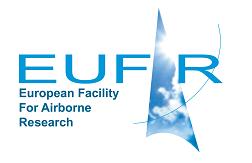Project

HOLUHRAUN_HAZ- Assessing the hazard and testing our understanding of environmental and geophysical responses from emplacement of a large volume lava flow field
Abstract
On the 29th August 2014, the Holuhraun fissure, part of a 190km long NNE-SSW trending fissure swarm in eastern Iceland, started erupting. The eruption is feeding an increasingly voluminous and complex flow field that has reached 1.4-2 km3 and is now classified as a flood basalt eruption (>1km3 erupted volume). The lava flows are accompanied by abundant sulphur dioxide (SO2) emissions (max around 100,000 tonnes/day). This is the first opportunity in Iceland to analyse in detail all aspects of a large magnitude fissure eruption and unlike ground-based and space-based monitoring, airborne data has not yet been used to its full potential. Our primary aims are: i) To characterise and quantify the topology, growth and emplacement of a large lava flow field extruded onto a flat flood plain to enhance lava flow models ii) to improve lava cooling models in a hazards context and better understand spatial distribution of gas emissions, iii) to identify how the lava emplacement has affected drainage, especially for potentially catastrophic floods caused by the melting of ice by volcanic activity. We propose acquisition of aerial data including hyperspectral thermal infrared (TIR) and shortwave infrared (SWIR) as well as photography and laser altimetry (LiDAR) of the eruption and the lava flow field. This will enable quantification of the lava volume and thickness at desirable accuracy along with characterisation of surface structures and cooling profiles of a volumetrically significant lava flow field in a rift setting. These airborne data will be complemented by ground-based time-series data.
Details
| Keywords: | EUFAR, hyperspectral, ARSF, EUFAR15_58 |
|---|---|
| Previously used record identifiers: |
No related previous identifiers.
|
Related Documents
| EUFAR HOLUHRAUN_HAZ project documentation |
| EUFAR Web page |
